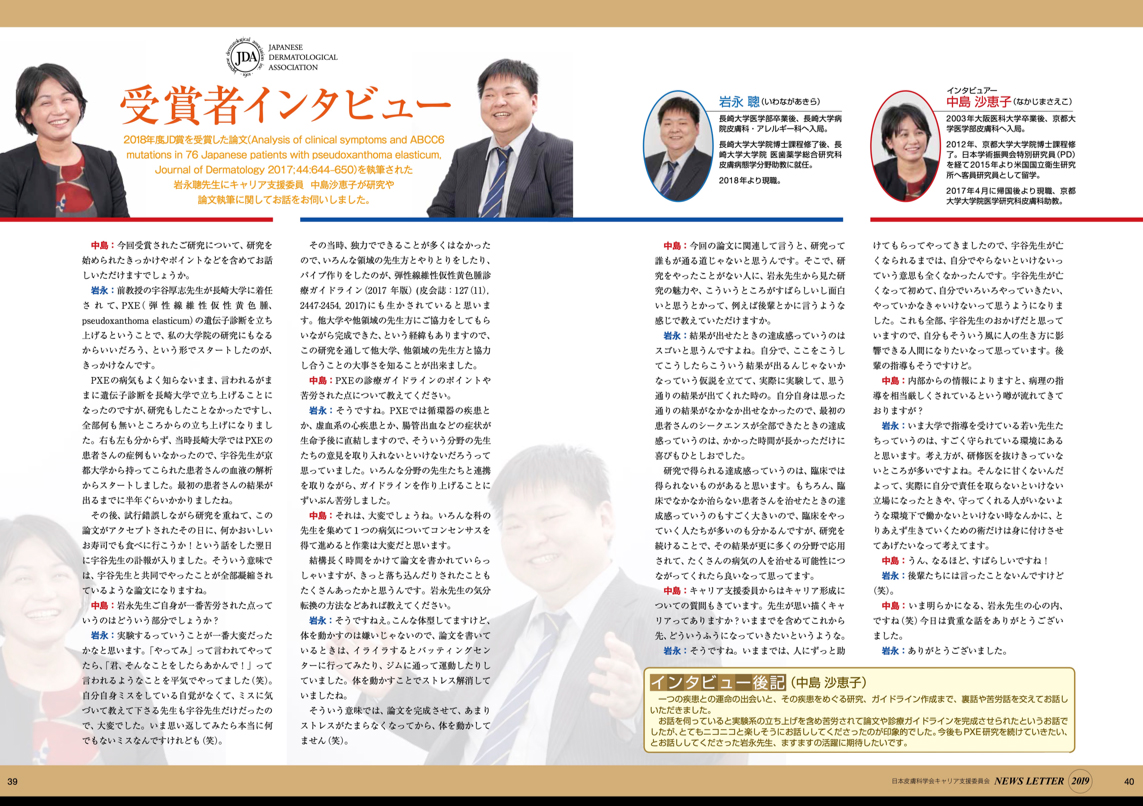研究テーマ | Research theme
稀少難治性皮膚疾患,弾性線維性仮性黄色腫に関する調査研究:ピロリン酸含有食品の治療応用
Investigation for the etiology of pseudoxanthoma elasticum:Therapeutic applicatin of foods containing pyrophosphate
研究者 | Researcher
研究概要 | Research summary
弾性線維性仮性黄色腫(pesudoxanthoma elasticum:PXE)は皮膚,眼,心血管に障害を生じ,弾性線維変性とカルシウム沈着を特徴とする常染色体劣性遺伝疾患です。物質輸送に関与しているATP-binding cassette transporterの1つであるMRP6(multidrug resistance-associated protein 6)分子の異常による疾患(ABCC6遺伝子)です。長崎大学皮膚科はPXEの国内拠点であり,全国の患者情報を集積するとともに遺伝子変異の解析を行なっています。この疾患では血中のピロリン酸が低下し,石灰化をきたすことが知られています。そのため,ピロリン酸をなんらかの形(食品等)で摂取することにより症状の軽減が見込まれています。私たちはそのような食品の開発を通して,難病治療に貢献するよう尽力しています。
http://www.med.nagasaki-u.ac.jp/dermtlgy/activities/pxe.html
Pseudoxanthoma elasticum (PXE) is an autosomal recessive disorder characterized by elastic fiber degeneration and calcification that damages the skin, eyes, and cardiovascular system. It is a disease (ABCC6 gene) due to an abnormality in MRP6 (multidrug resistance-associated protein 6) molecule, which is one of the ATP-binding cassette transporters involved in substance transport. Nagasaki University Dermatology Department is a domestic base of PXE, which collects patient information nationwide and analyzes gene mutations. The disease results in a decrease in pyrophosphate in the blood, resulting in calcium deposition. Therefore, ingestion of pyrophosphate in some form (food, etc.) is expected to reduce symptoms. We are committed to contributing to the treatment of intractable diseases through the development of such foods.
http://www.med.nagasaki-u.ac.jp/dermtlgy/activities/pxe.html
特色・研究成果・今後の展望
長崎大学が拠点として本難病の解決に向けて取り組んでおります。主研究者の岩永聰先生は,PXE研究の第一人者として注目されている新進気鋭の医師です。
社会実装への展望
ピロリン酸含有食品の開発を通して,難病治療に役立てることが私どもの悲願です。私たち医療従事者には食品開発のアイデアが乏しく,企業の皆様のご協力ご助言をお待ちしております。
